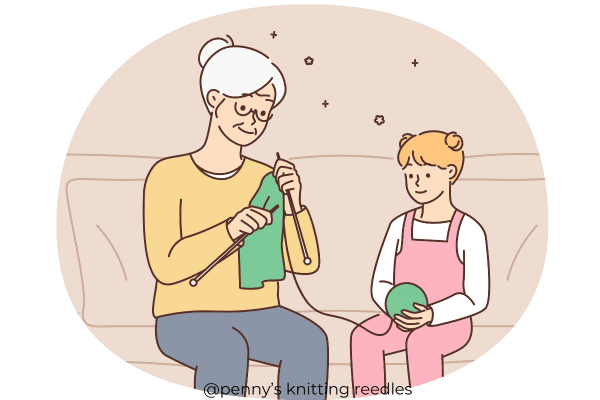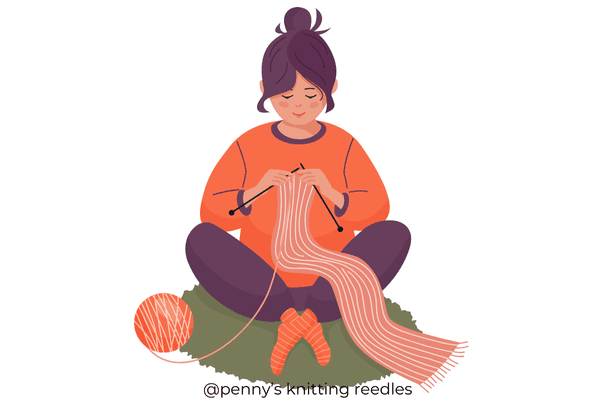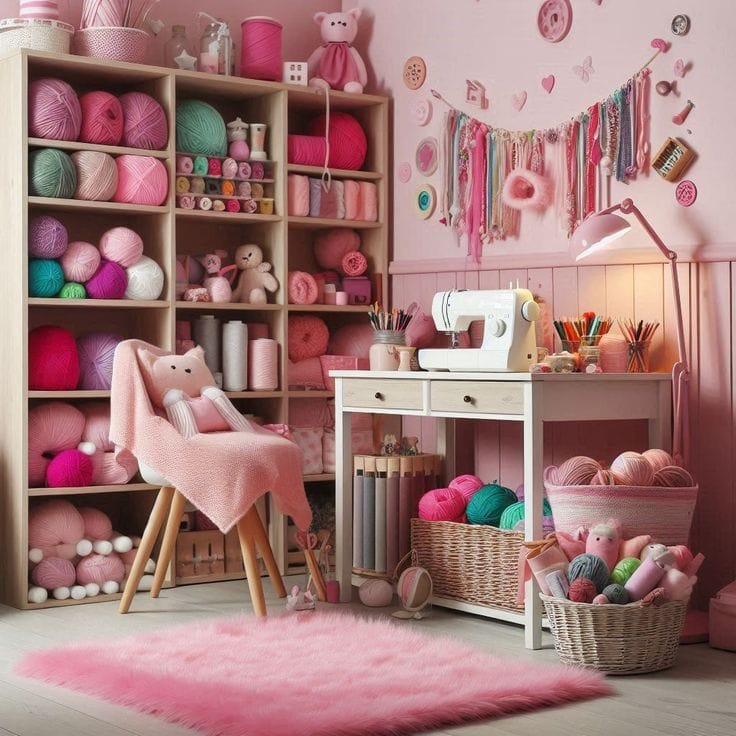Knitting might be an age-old craft, but it’s far from outdated.
From relaxing mindfulness to a sense of creative accomplishment, knitting has universal appeal—and it’s increasingly finding favor with younger crafters.
Whether you’re a parent, teacher, or enthusiastic mentor, here’s how to spark a lifelong passion for yarn and needles in kids and teens.
1. Why Teach Knitting to Kids and Teens?
- Fine Motor Skills: Handling needles and yarn helps children develop better hand-eye coordination.
- Mindfulness & Patience: The rhythmic motion of knitting can be surprisingly calming—an excellent antidote to screen-based distractions.
- Creativity & Confidence: Seeing a project come to life stitch by stitch gives kids a sense of pride and self-expression.
2. Understanding Age-Appropriate Learning
Not all young crafters are alike.
Adapting your approach to their motor skills and attention span can make all the difference.
Younger Children (Ages 5–8)
- Short Attention Spans: Keep lessons playful and brief.
- Big, Visible Tools: Use chunky yarn and large needles (plastic or bamboo) to help them see and grip stitches easily.
- Minimal Pressure: Focus on the knit stitch only—celebrate small wins like casting on or completing a couple of rows.
Tweens (Ages 9–12)

- Growing Patience & Skill: Ready for slightly more involved patterns, like a simple scarf.
- Personalization: Tweens appreciate colorful yarns, novelty fibers, or variegated skeins.
- Positive Reinforcement: Encourage them to experiment with stripes or other simple patterns.
Teens (Ages 13+)

- Desire for Self-Expression: Perfect time to let them pick patterns reflecting their style (beanies, crop tops, or phone cozies).
- Intermediate Skills: Can handle hats in the round or simpler garment shaping.
- Community Engagement: Social media “Knit-Alongs,” YouTube tutorials, or knit/crochet clubs can keep motivation high.
3. Setting Up a Kid/Teen-Friendly Knitting Environment

A supportive, fun learning space can make or break the lesson.
Comfortable Space
- Well-Lit Area: Good lighting helps them see stitches clearly and reduces strain.
- Flexibility: Let kids sit on the floor or a beanbag if it puts them at ease.
Tools & Materials
- Kid-Friendly Needles: Short, blunt-tip needles in plastic or bamboo reduce poking hazards.
- Chunky or Worsted Yarn: Bright colors are more exciting and help them spot mistakes quickly.
- Straightforward Patterns: If using written instructions, keep them large-print with simple diagrams.
Safety & Storage
- Secure Tools: Store scissors, darning needles, and other sharp items in a lidded container.
- Tidy Up: Show them how to wind yarn and keep projects neatly, preventing tangles or lost pieces.
4. Teaching Techniques & Engagement Strategies
Demonstration & Hands-On Practice
- Slow, Clear Modeling: Demonstrate each step (casting on, knit stitch) at a pace they can follow.
- Immediate Imitation: Let them try right after watching you, helping them lock in the motion.
Positive Reinforcement
- Celebrate Milestones: Completing a row or mastering a new technique deserves a cheer.
- Stay Patient: Mistakes happen—focus on improvement over perfection.
Step-by-Step Progression
- Mini-Lessons: Break down knitting into distinct skills (cast on, knit stitch, bind off).
- One Skill at a Time: Introduce the purl stitch or more complex patterns only after they’re confident with the basics.
Incorporating Fun Elements
- Customization: Let them choose yarn colors and add pom-poms or fringe.
- Gift Projects: Encourage them to make small gifts for friends to build excitement.
5. Easy First Projects for Kids & Teens
Finger Knitting or Loom Knitting
- Great Intro: Perfect for ages 5–8, letting them feel success quickly.
- Simple Outputs: They can create ropes or headbands in minutes.
Basic Scarf or Headband
- Straight Stitches: A rectangular project is less intimidating.
- Stripes: Teens might love mixing different colored yarns for a bold look.
Wrist Cuffs or Phone Cases
- Quick Wins: These small items can be done quickly—perfect for building confidence.
- Customizable: Add beads, buttons, or embroidered details to personalize.
Beanies or Hats (For Teens)
- Introducing Circular Needles: Slightly advanced, but teens often enjoy the challenge.
- Sense of Accomplishment: Wearing their handmade beanie can be a big boost to self-esteem.
6. Overcoming Common Challenges
Dropped Stitches
- Rescue Techniques: Show them how to use a crochet hook or a spare needle to pick up stitches.
- Lifelines: For older kids or bigger projects, teach them how to insert a lifeline after every few inches to save progress.
Boredom & Frustration
- Variety: Alternate, simple swatch practice with a splash of color or a new stitch.
- Short Sessions: It’s better to do short, engaging lessons than push through when they’re tired.
Tension Issues
- Relax the Grip: Demonstrate the difference in stitches when yarn is held too tightly vs. loosely.
- Hand Breaks: Encourage them to wiggle their fingers and relax their wrists if they cramp.
Peer Pressure or Self-Consciousness
- Role Models: Show them that celebrities and influencers are knit.
- Group Sessions: If they can knit alongside friends, it feels less “uncool” and more social.
7. Motivating Teens with Modern Trends
Social Media & Online Resources
- TikTok & Instagram: Many creative knitting reels and quick tutorials exist, appealing to tech-savvy teens.
- Sharing WIPs: Hashtags like #KnittingTeens or #YarnLove can foster community feedback.
Fashion Inspiration
- Trendy Patterns: Bucket hats, chunky sweaters, or stylish crop tops keep them engaged.
- Customization: Color blocking or intarsia with band logos or favorite characters adds personal flair.
Knit-Alongs & Challenges
- Group Motivation: Encourage them to join or host knit-alongs with peers.
- Friendly Competition: Set goals—like finishing a hat in two weeks—and celebrate achievements.
8. Creating a Supportive Learning Community
Craft Clubs & After-School Programs
- Workshops: Schools or community centers can host informal knitting circles, inviting experienced knitters as mentors.
- Show & Tell: Encourages kids to bring their projects and exchange tips.
Online Forums & Groups
- Kid-Friendly Platforms: Ensure any online space is moderated to keep interactions positive.
- Progress Photos: Sharing updates fosters accountability and offers quick encouragement.
Family Bonding
- Multigenerational Activity: Parents or grandparents can pass down tips, making it a heartfelt tradition.
- Movie Nights + Yarn: Combine family time with knitting for a relaxed, cozy evening.
9. Conclusion
Recap the Joy of Knitting for All Ages
Knitting offers more than just scarves and sweaters—it’s a skill that teaches creativity, persistence, and confidence, all while bridging generations.
Feel free to learn the purl stitch or try a colorwork pattern once you are comfortable.
Share Your Experiences
Which projects made you feel like a hero? Comment about your triumphs (and funny mishaps) in teaching kids or teens to knit.
Final Thoughts
Teaching kids and teens to knit can spark a lifetime love of making things by hand.
By choosing age-appropriate projects, maintaining a fun, supportive environment, and infusing modern trends, you’ll set them up for success—and possibly watch them surpass your knitting skills.
So gather those chunky needles and rainbow-colored yarn and help the next generation stitch their way to creativity and confidence!
